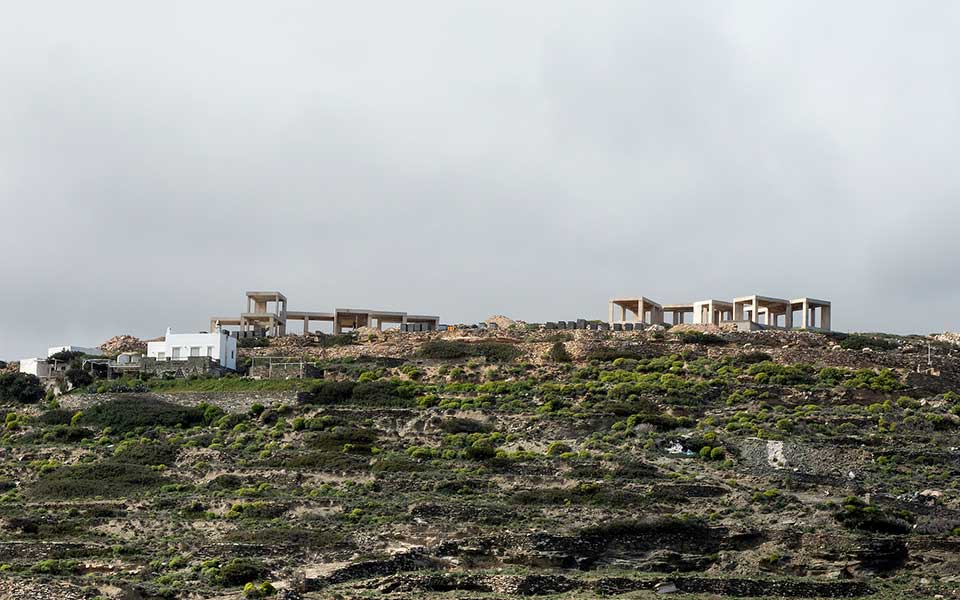Nestled amidst holiday homes and tourist accommodations stands an architectural gem – a traditional “themonia,” as the locals affectionately call it. This quaint farmhouse, crafted from whitewashed stone, stands in accordance with the materials available in the region. Its roof, supported by sturdy beams hewn from olive trees, boasts a porthole-like window that gazes out upon the Aegean Sea.
Emerging from its wooden door, Marianthi Chrysanthopoulou bears a tray adorned with five heads of Sifnos manouri cheese, destined to mature and soak up the rich aromas of wine lees. In the quiet of late February, devoid of the summer crowds, the gentle hum of bees fills the air.
“We’ve made no alterations to it. It’s as if we’ve inherited it from our great-grandfather,” says the 77-year-old resident of this well-preserved themonia, situated near the settlement of Faros on the island of Sifnos. This enclave, untouched by tourist development, is a coveted find, often sought after by Italians and French. Yet, despite tempting offers, the family remains resolute: “We won’t part with it.”
To get there, we passed by a hill with buildings that captured attention with their diverse architectural styles. Each structure presented a unique approach. At a higher elevation, stood a rustic summer house crafted from unfinished stone. Further down the slope, a more contemporary dwelling emerged, distinguished by its expansive glass windows, a departure from local design norms.
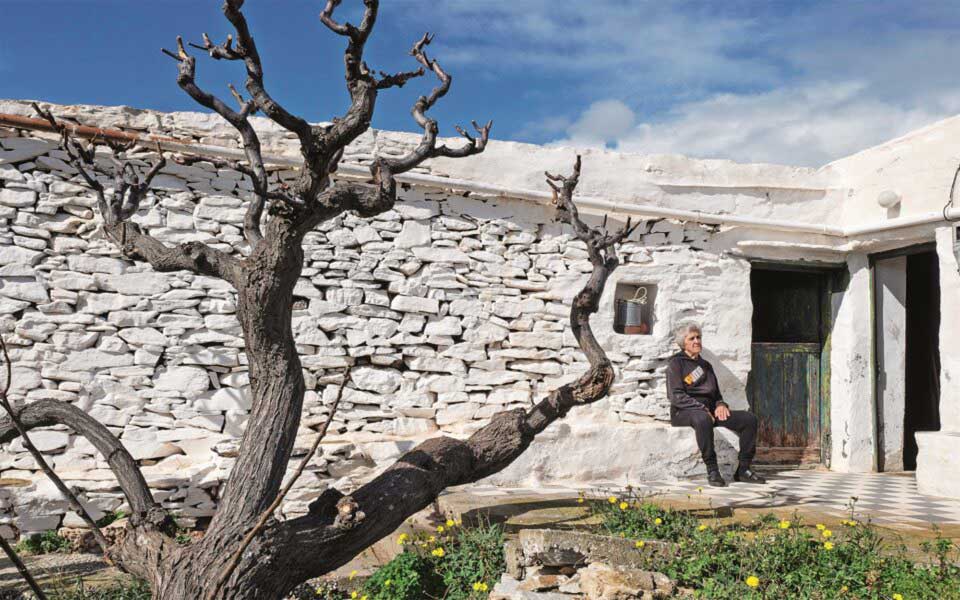
© Enri Canaj
Continuing along the winding road, we encountered the entrance of a hotel, its walls adorned in soft beige hues instead of the customary white. It is off season on the island, many establishments lie dormant, their doors and windows secured save for the occasional sight of repair work in progress. Yet, amid the quietude, debates surrounding the future and identity of the island rage on.
In March 2023, Sifnos Mayor Maria Nadali penned a letter to the relevant authorities and ministries, urging them to intervene and prevent the further degradation of the island’s landscape. She lamented the “unchecked development” that threatened its unique character, citing licenses for swimming pools, underground structures, and buildings constructed from unfinished stone as contributing factors. Recently, the Elliniki Etairia – Society for the Environment and Cultural Heritage proposed including Sifnos, Serifos and Folegandros in the Europa Nostra endangered monuments program.
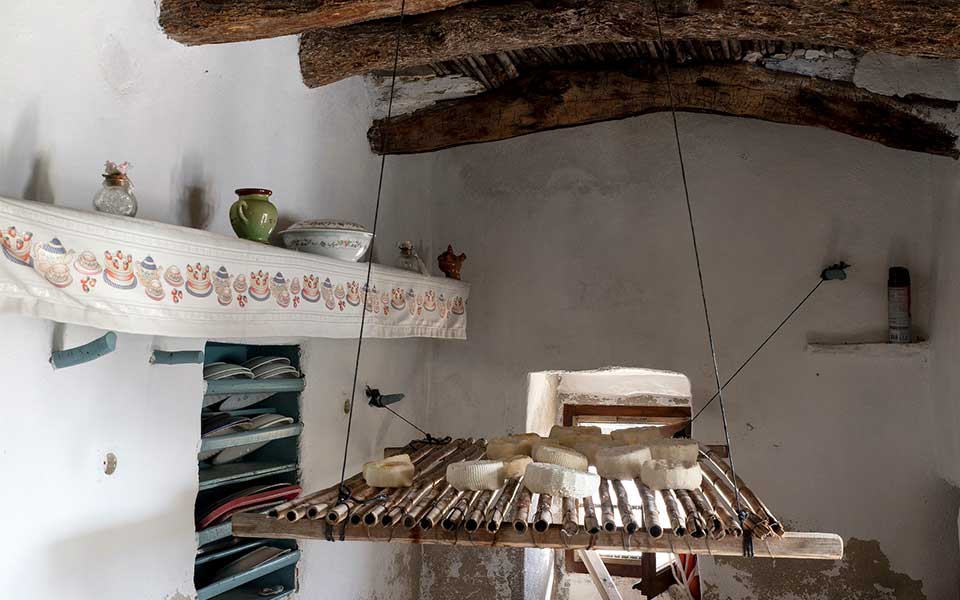
© Enri Canaj
“It was not a spontaneous initiative,” Nadali says. She explains that her letter was the culmination of extensive discussions and consultations, including the establishment of an advisory architectural committee by the municipality. “In the midst of an election year, I felt compelled to set a bold tone, despite the considerable risks,” she reflects. “Initially, the responses were overwhelmingly negative. Colleagues from neighboring islands warned me, ‘You’re sabotaging your own chances; you may not want to win the election.’”
Shortly after the publication of the letter, a wave of protests erupted, with scores of construction professionals – contractors, carpenters, electricians and plumbers – demonstrating against the measure. We now find ourselves in the very room where the mayor received these protesters. Adorning one wall are black-and-white photographs of esteemed local figures from days past – all men – while on the opposite side hang landscapes painted by Kostas Kounadis, an artist enamored with the Sifnos terrain. Reflecting on her lineage, the mayor shares that her grandfather was a craftsman, and her father a carpenter. During her encounter with the construction workers, she invoked their memory. “I reminded them that they possess the capacity for both excellence and mediocrity. My grandfather crafted a magnificent bridge, a true marvel, yet right beside it, he erected our family home, one of the worst on the island,” she recounts.
She says that Sifnos has yet to lose its distinctive character, but she herself harbors concerns regarding the direction and speed of its development. “We’re not advocating for a return to the past, clinging to days when five cousins shared a single bed,” she clarifies. “We welcome anyone wishing to build here. However, we seek a sense of moderation, a conscientious approach – we desire structures that harmonize with the natural landscape.”
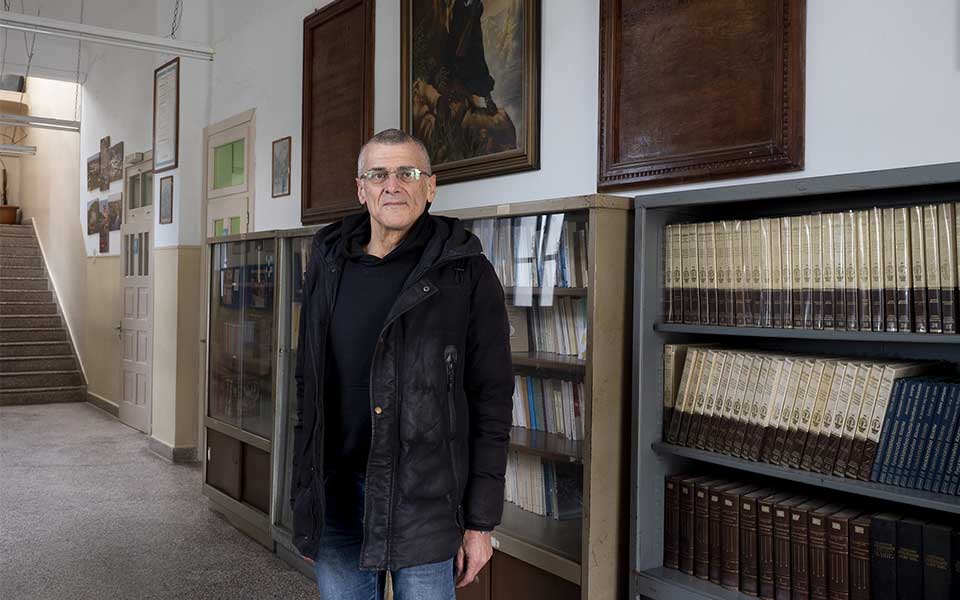
© Enri Canaj
This sentiment resonates with many on the island. Nikos Belios, headmaster of the high school in Apollonia, the island’s capital, invokes a local saying: “Your home should be as large as you can fill it, and your land as vast as your vision.” “That’s how construction was approached in days gone by,” he explains. “People didn’t seek grandiose homes because sustenance came from the land. Yet, today, we’re exceeding bounds, straying from the aesthetic and scale ingrained in our upbringing. Outsiders, unfamiliar with the essence of Sifnos, are erecting residential complexes that fail to align with our local standards.”
Many residents interviewed by Kathimerini express concern over the construction of buildings by individuals lacking roots on or longstanding ties to the island, viewing it as a risk factor. Interestingly, even some of the new construction pioneers are apprehensive. Recently, a Dutchman reached out to a local, requesting photos of the surroundings of his holiday home to monitor nearby developments.
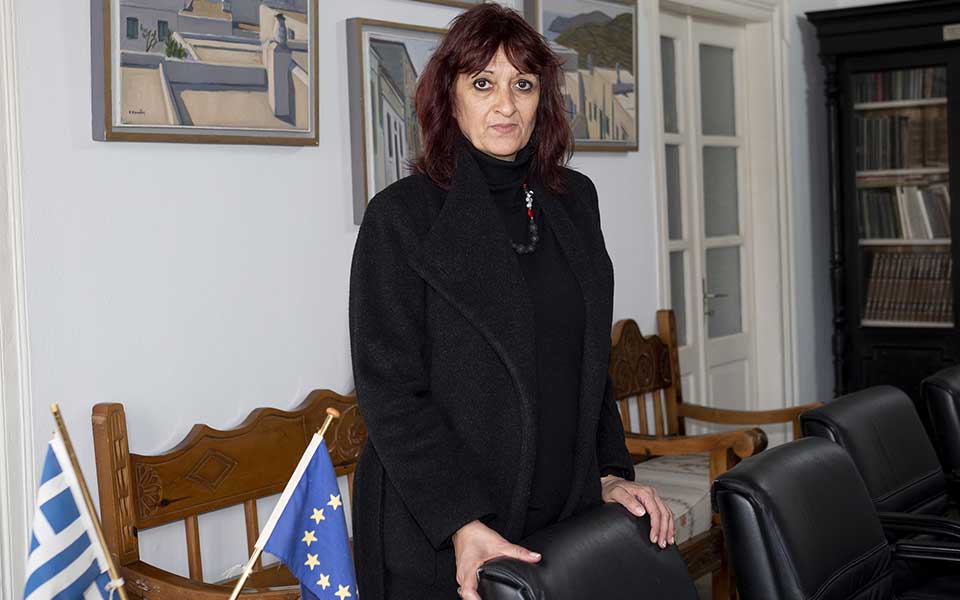
© Enri Canaj
Building permits
Between 2018 and 2022, Sifnos saw the issuance of 81 building permits for new constructions and 40 for extensions, resulting in a total increase of 24,619 square meters in constructed area. In 2023 alone, 46 building permits were granted for new constructions, with 36 located outside the settlements. Notably, last year’s permits included authorization for 17 swimming pools. Between January and early March of this year, permits have been approved for new constructions expected to contribute an additional 3,250 square meters to the island. Within just two months, the approved area for this year represents nearly 43% of last year’s permits. Noteworthy among this year’s permits are seven tourist accommodations and a five-star hotel, slated to be situated within one of the settlements.
“In recent years, there has been a significant influx of affluent French buyers acquiring properties on the island,” explains Kostis Dimitriadis, an architect with decades of experience on Sifnos. “Many are leaving Paros due to perceived issues of overdevelopment and pollution, finding Sifnos to offer a superior quality of life.”
Dimitriadis acknowledges the looming threat to Sifnos’ charm but questions why there’s a continuous stream of people seeking “themonia, a little house,” if the island is truly in peril. “It’s because they recognize the island’s aesthetic allure and its commitment to maintaining a certain standard,” he adds.
He notes a pattern where interest in obtaining building permits spikes before anticipated legislative changes, driven by concerns of impending restrictions or bans. “People want to act swiftly out of apprehension,” he observes.
Unlike larger municipalities, Sifnos lacks a dedicated construction department, with inspections handled by the understaffed office on Milos island. Thodoris Polenakis, president of Sifnos’ Association of Professionals and Traders, highlights challenges with inspections and the lack of coordination between services. He points out the proliferation of underground constructions, which disrupt the iconic dry stone walls known as “xerolithies.”
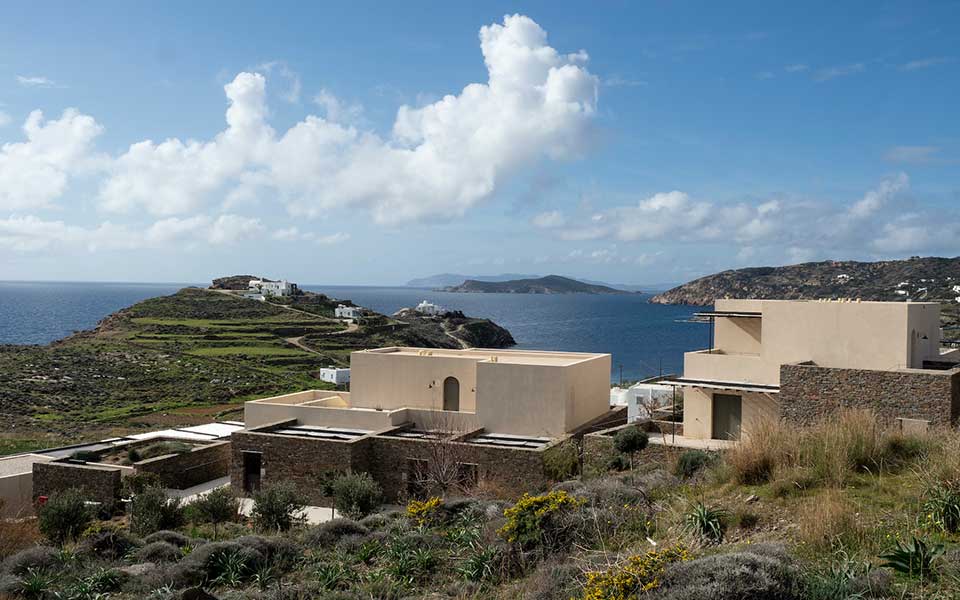
© Enri Canaj
“Villas and multi-dwelling units are encroaching on areas once reserved for agriculture,” Polenakis laments. He references the insights of German architect and honorary citizen of Sifnos, Friedrich Christoph Wagner, who extensively studied the island’s building traditions. “Wagner observed that in the past, people wanted to live next to one another; they wanted to communicate. Now, a different lifestyle is being imposed, straying from the moderation and traditional Cycladic architecture,” Polenakis concludes.
Archaeologist Katerina Kalantzopoulou, stationed at the Ephorate of Antiquities of the Cyclades in Athens since 2019, has observed significant shifts on Sifnos since her earlier work on the island in the 1990s. “Over the past five years, I’ve noticed a substantial transformation. There’s been a surge in construction activity that is fundamentally reshaping Sifnos’ distinctive character,” she observes. She points to “the emergence of villa complexes with swimming pools, varied architectural styles, and non-traditional configurations in outlying areas.”
“Completely alien”
Kalantzopoulou clarifies that the archaeological service holds jurisdiction over areas adjacent to archaeological sites or monuments. However, its influence in other cases is less definitive. She highlights the paradox of swimming pools, which are “completely alien” to the arid island landscape.
Mayor Nadali’s letter called for several measures, including a ban on private swimming pools, citing the acute water shortages experienced during the summer months. Additionally, she proposed regulations stipulating that buildings in outlying areas be restricted to ground-floor construction, capped at a maximum height of 4.5 meters, with whitewashed masonry. Nadali also singled out the Poulati area, home to the namesake church, a designated monument. Expressing dismay over the encroachment upon this site, the municipal authority demanded access to all building permit records for ongoing constructions in the vicinity. “It feels as though the island postcard has been marred,” she laments. “I’m uncertain if any future developments can rectify the irreversible damage we’ve witnessed; at best, it may be somewhat mitigated.”
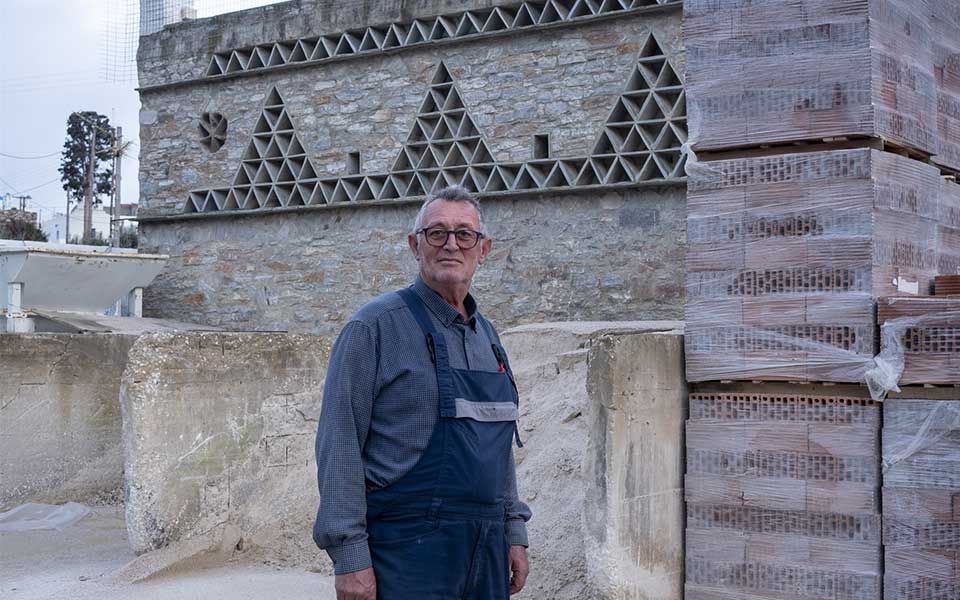
© Enri Canaj
As the sun begins its descent, weary workers gather to unwind with a beer after another demanding day. Among them is Nikos Gerontopoulos, proprietor of an earthworks and building materials yard, who joined the family business straight out of school. Adorning his office walls, alongside images of excavators, are photographs of his father, who introduced the island’s first taxi service in 1962. Reflecting on his industry’s resilience amidst economic fluctuations, Gerontopoulos nevertheless voices a deep-seated concern.
“Despite making a livelihood from this industry, I’m troubled by the trend of major players acquiring vast tracts of land,” he says. “They purchase parcels, including those unsuitable for construction or cultivation, surrounding their primary plot.” He fears the eventual emergence of hotels on these lands, transforming Sifnos into another Mykonos. “While I rely on this business, I advocate for mild development. It pains me to witness permits granted by the Architectural Council on Syros for structures that deviate from our local architectural identity.”
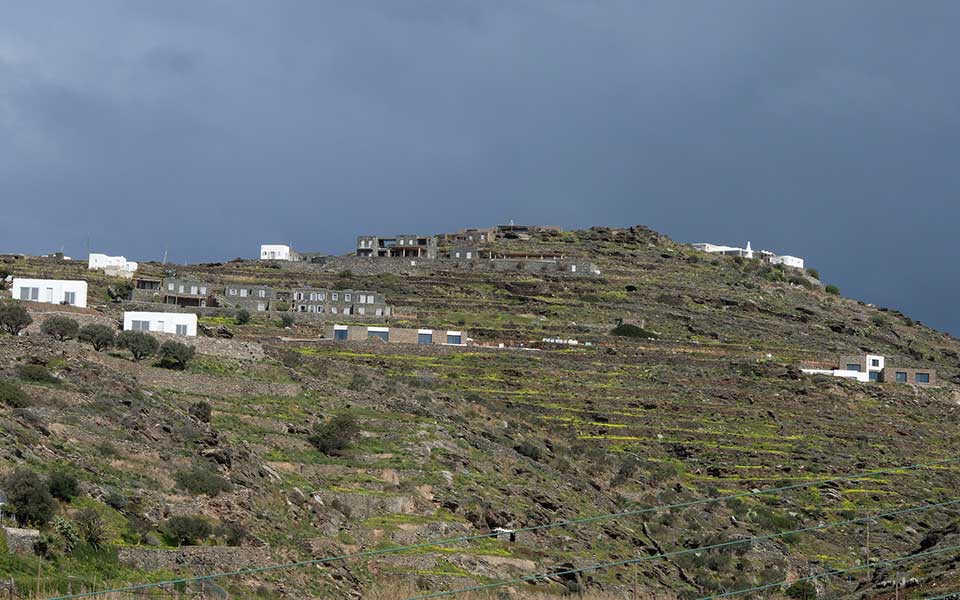
© Enri Canaj
The peril
Andreas Kalogiros, a civil engineer who has been working on Sifnos for the past three decades, emphasizes that the island “is not a suitable canvas for architectural experimentation.” “Even though it may appear restrictive to innovation and creativity, adhering to imitation or standardization is a prudent approach,” he asserts. “We must establish clear guidelines on what construction should proceed and how, or risk irreversible damage to our environment.”
Kalogiros underscores the pivotal role professionals in the sector play in shaping the island’s development. He emphasizes the importance of their decisions and the boundaries they set for their clients. Recalling an incident where a client insisted on installing pools during a building renovation in Pano Petali, he recounts, “We strongly opposed the idea to the extent of considering walking away. Pools are undeniably lucrative for contractors and engineers. Eventually, the client was convinced and gave up on the idea. However, another owner might have sought out a different colleague who might agree.”
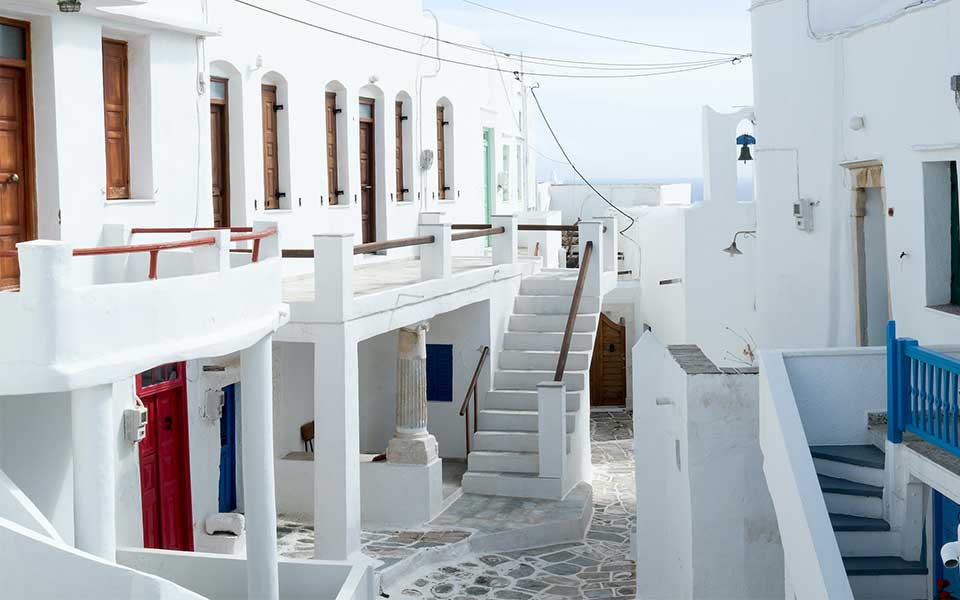
© Enri Canaj
The serene atmosphere of Sifnos during the off season can be misleading. The bustling congestion typical of summer is absent, and the infrastructure is not put to the same rigorous test. According to data compiled by Ioannis Spilanis, a professor at the University of the Aegean and head of the Local and Island Development Laboratory (ETNA), the population of Sifnos increased by 6 percent between 2011 and 2022, while the number of residences surged by 13.6 percent.
Mayor Nadali recounts last summer’s strenuous efforts to supply reservoirs in the settlement of Katavati with water via a water truck to avert shortages. This year, she anticipates a resolution to this issue due to the completion of related infrastructure projects. In the traditional settlement of Artemonas, Giorgos Atsonios’ tsipouradiko (a restaurant offering tsipouro alongside small appetizers) remains closed. Returning to the island in 2005, Atsonios has witnessed a surge in new shops and a growing interest in professional spaces over time. However, he expresses a preference for a less crowded summer season or an extension of the tourist season. “Because of the success of my shop, some suggest expanding with more tables. Yet, I refrain due to limitations in my kitchen’s capacity. The island is caught up in a similar conundrum. We need to prioritize infrastructure, such as water and sewage systems. Every summer we are faced with the same challenge,” he explains.
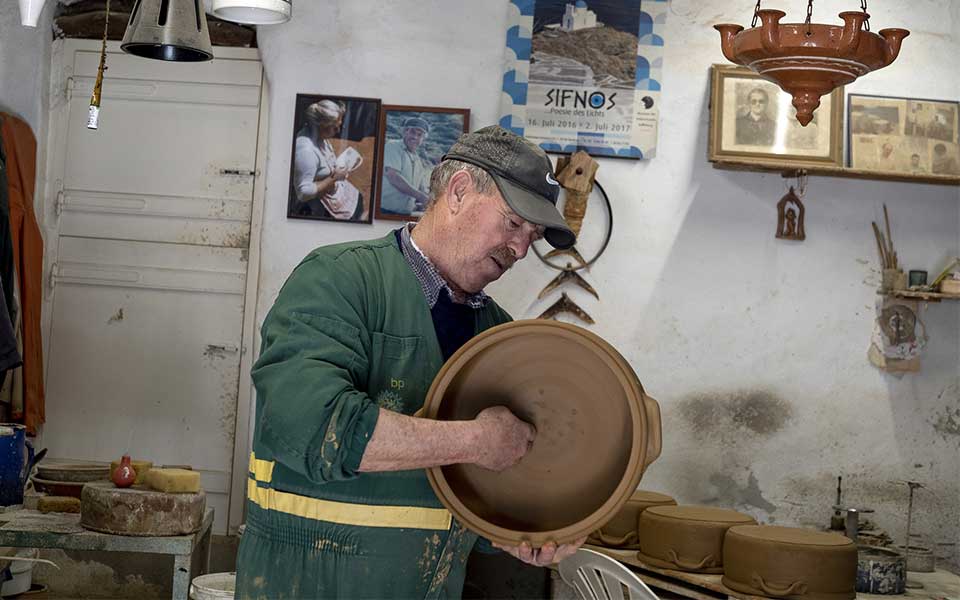
© Enri Canaj
A pottery workshop in Vathy resists
Dimitris Kouzelis has been visiting Sifnos since 1992, and 15 years ago, he bought and renovated a house in Katavati.
“Its infrastructure lacked and still lacks,” he says, referring to the water supply. He believes that except for the last two years, the island had been experiencing moderate growth and could absorb changes. “I see my local friends saying, ‘I inherited the land from my grandfather, but I’m not going to cultivate it; I’d rather sell it to make some money, to educate my child.’ So, there’s a tendency to sell, and there are buyers for everything,” he says.
In Vathy, 67-year-old Antonis Atsonios has kept the pottery workshop as his grandfather set it up during the years when his profession was one of the main activities on the island. When we meet him, he is making pottery, preparing for his summer clients. From a corner of the workshop, his white rabbit, Stifados, silently watches him. “It’s soothing; when you get your hands dirty, everything goes away,” says the potter as he touches the clay.
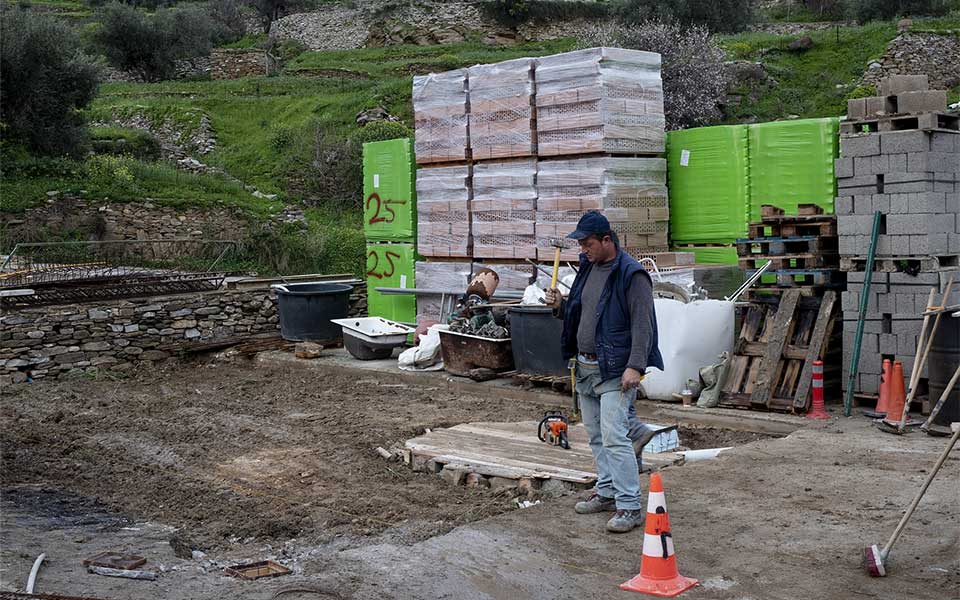
© Enri Canaj
We ask him why he didn’t sell his property, which is in a privileged location. “No one officially came to ask for it because we intimidate them too. The beach here is tempting, but we didn’t let anyone hope they could see it as a tourist investment,” he says. Tourism is also a source of income for him. His son says that after the coronavirus pandemic, American visitors who arrive here spend more money on ceramics. “We held on with tourism; we survived,” Atsonios points out.
He reflects on how much the island has changed over the years. “I feel like I’ve kept something for Sifnos, a tradition, a space as it was,” he says, then adds after a short pause, “But I don’t feel like I’ve made money, like I’ve helped my children, my family.”
This article was previously published in Greek at kathimerini.gr

